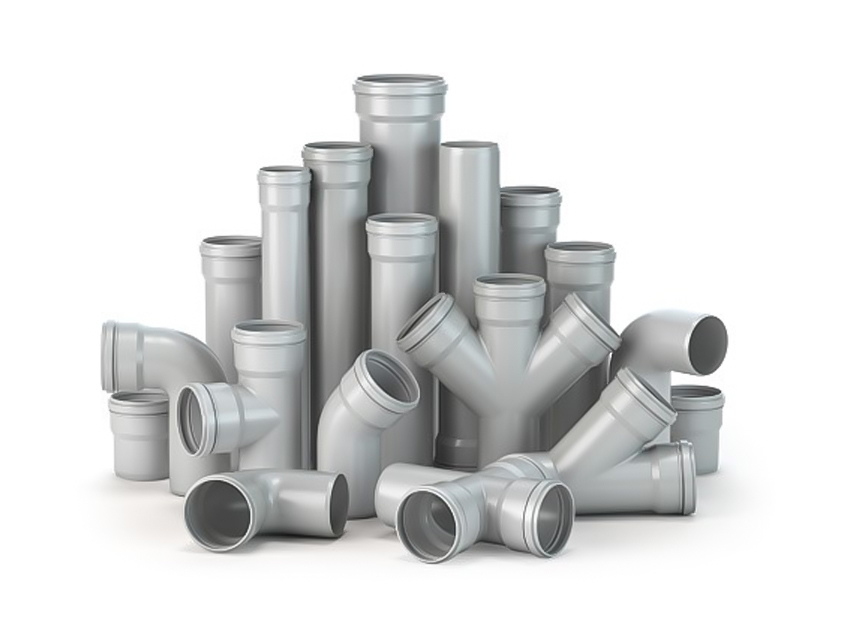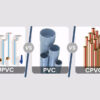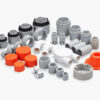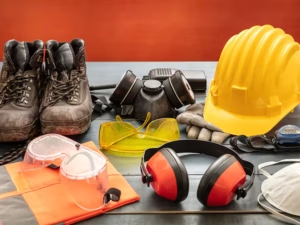Plastic piping systems have become essential in construction, industrial, and residential applications due to their durability, flexibility, and resistance to environmental factors. Unlike metal pipes, which are prone to corrosion, rust, and degradation, plastic pipes offer a longer lifespan with minimal maintenance.
Thanks to advancements in material science and manufacturing technologies, modern plastic pipes are designed to withstand harsh conditions, extreme temperatures, and high pressures while maintaining their structural integrity over time. In this article, we’ll explore the science behind the durability of plastic piping systems, key innovations, and how to select the right piping for your needs.
Looking for high-quality plastic piping solutions? Discover Salem Balhamer Plastic’s durable and reliable products today!
1. Key Factors Affecting the Durability of Plastic Pipes
The longevity of plastic piping systems depends on several scientific and engineering factors, including material composition, manufacturing techniques, and environmental resistance.
A. Material Composition
Different types of plastic materials offer varying degrees of durability and resistance to external factors:
- PVC (Rigid Polyvinyl Chloride)/ UPVC (Unplasticized PVC): Commonly used for drainage, irrigation, and electrical conduits, lightweight, cost-effective, and resistant to corrosion. rigid , higher strength and chemical resistance, making it ideal for potable water systems and industrial applications.
- CPVC (Chlorinated PVC): Modified to withstand higher temperatures and aggressive chemicals, commonly used in hot water plumbing and industrial fluid transport.
- HDPE (High-Density Polyethylene): Offers high impact resistance, flexibility, and resistance to chemicals, widely used in gas pipelines, water distribution, and industrial applications.
- PPR (Polypropylene Random Copolymer): Known for its heat resistance and durability, making it a preferred choice for hot and cold water supply systems.
B. Manufacturing Processes
The strength and longevity of plastic pipes depend on the manufacturing methods used:
- Extrusion Process: Ensures a uniform and seamless pipe structure, reducing weak points and potential failure zones.
- Reinforcement Techniques: Some pipes are reinforced with fiberglass, carbon fiber, or multilayer structures for added strength.
- Heat Fusion and Welding: Advanced joining techniques create leak-proof connections that enhance the overall durability of piping systems.
C. Environmental Resistance
Plastic pipes are engineered to withstand harsh environmental conditions:
- UV Resistance: UV stabilizers in plastic pipes prevent sunlight degradation, ensuring longevity in outdoor applications.
- Temperature Tolerance: CPVC and PPR pipes can withstand higher temperatures without compromising performance.
- Chemical Resistance: Unlike metal pipes, plastic pipes do not corrode or react with acids, alkalis, or other chemicals, making them suitable for industrial applications.
2. Advantages of Long-Lasting Plastic Piping Systems
Plastic pipes offer numerous benefits over traditional materials such as metal and concrete:
- Corrosion and Rust Resistance: Unlike metal pipes, plastic pipes do not corrode, making them ideal for water supply and industrial applications.
- Flexibility and Impact Resistance: Some plastics, like HDPE, can bend and flex without breaking, making them ideal for underground installations.
- Lightweight and Easy Installation: Plastic pipes are much lighter than metal, reducing transportation and installation costs.
- Low Maintenance and Cost Efficiency: The long lifespan of plastic pipes leads to reduced repair and replacement costs, offering a cost-effective solution for various industries.
3. Innovations in Plastic Pipe Durability
Modern advancements in plastic piping technology have significantly improved their strength, efficiency, and environmental sustainability.
A. Advanced Polymer Blends
Manufacturers are developing high-performance plastic formulations that enhance strength, flexibility, and chemical resistance, ensuring longer-lasting performance.
B. Reinforced and Multilayer Pipes
The integration of fiberglass, aluminum layers, or carbon fiber reinforcements increases structural integrity and pressure resistance, making pipes more durable in extreme conditions.
C. Smart Piping Systems
The use of smart sensors integrated within plastic piping allows for real-time monitoring of flow rates, leaks, and pressure levels, helping prevent failures and extending system life.
D. Sustainable and Recyclable Materials
Eco-friendly plastic piping solutions now incorporate recycled materials and biodegradable polymers, reducing environmental impact while maintaining high durability.
4. Applications of Durable Plastic Piping Systems
Durable plastic piping systems are widely used in various industries due to their versatility and reliability.
A. Residential Plumbing
- Used for hot and cold water distribution in homes and apartments.
- CPVC and PPR pipes ensure safe and long-lasting water supply systems.
B. Industrial Applications
- Plastic pipes handle chemicals, gases, and high-pressure fluids in manufacturing and processing industries.
- HDPE and CPVC pipes are preferred for their chemical resistance and durability.
C. Agriculture and Irrigation
- PVC/UPVC and HDPE pipes are extensively used for efficient water transport in farmlands and greenhouses.
- Their UV resistance and flexibility make them ideal for outdoor irrigation systems.
D. Infrastructure and Municipal Systems
- Used in sewage, drainage, and water supply networks, ensuring long-term performance with minimal maintenance.
- UPVC/PVC and HDPE pipes are commonly used for underground and pressurized applications.
5. Choosing the Right Plastic Piping for Maximum Durability
To ensure long-lasting performance, selecting the right plastic pipe depends on several factors:
- Application Type: Consider whether the pipes will be used for potable water, drainage, or industrial fluid transport.
- Environmental Exposure: Choose UV-resistant and temperature-tolerant pipes for outdoor and high-heat applications.
- Pressure Ratings: Ensure that the selected pipes can withstand the required pressure levels for your project.
- Expected Lifespan: Compare different materials to find the most durable and cost-effective solution.
Need expert guidance? Contact Salem Balhamer Plastic today for premium-quality plastic piping solutions tailored to your needs!
Conclusion
The science behind durability and longevity in plastic piping systems ensures their reliability across diverse industries. With continuous advancements in material technology, manufacturing techniques, and environmental resistance, plastic pipes now offer superior strength, efficiency, and sustainability.
Choosing the right type of plastic pipe ensures long-term performance, minimal maintenance, and cost savings in residential, industrial, and infrastructure projects.
Looking for durable and high-performance plastic pipes? Explore Salem Balhamer Plastic’s wide range of solutions for your next project!





